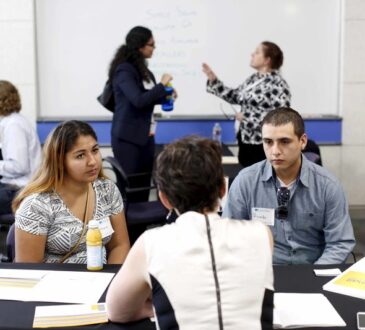
If you don’t speak Spanish, helping your child learn it can be quite challenging! Maybe your children are in a dual-language program, and you’re concerned they’ll forget all their Spanish over the summer. Or, perhaps you’ve always wished you were bilingual but, like most of us, never had the chance to live in another country. Even if moving to Spain or Mexico isn’t an option, you still want to give your children the gift of bilingualism.
Fortunately, you can help your child learn Spanish and immerse your home in a Spanish-speaking environment with these ten tips:
- Start young if possible: Studies show that children don’t learn to speak from television alone, but it does help them get used to the rhythm and sounds of a language. This is crucial because as we age, our ability to hear new sounds diminishes slightly. So, if you allow 30 minutes of TV a day, make sure to choose Spanish-language kids’ shows on Netflix—there are plenty available!
- Read in Spanish: Even if you’re not fluent, give it a go! This shows your child that Spanish is a part of daily life. Alternatively, you can listen to audiobooks together. You’ll find many native Spanish speakers reading books for kids on YouTube. Even just ten minutes a day is fantastic—be proud of your efforts!
- Try Spanish apps: Best suited for kids aged seven and up, these apps won’t make your child fluent but can help with vocabulary and sentence structure. Duolingo has improved significantly and can be quite engaging. Depending on your child’s attention span, this could be a fun and educational tool.
- Spend time with Spanish speakers: If you have access to native speakers, spend as much time with them as possible, especially if they have children who speak Spanish at home. Your child can play with them and hear Spanish spoken in everyday contexts.
- Consider a Spanish-speaking babysitter: If you don’t have Spanish-speaking friends, hiring a babysitter who speaks only Spanish with your child can be a great option. A high school or college student could be an affordable choice. Aim for at least four hours a week for noticeable improvement, but more is even better.
- Enroll in Spanish classes: Online Spanish classes with live teachers can help your child become fluent. You don’t need years of study before joining a speaking class—many focus on getting kids to speak right away. Look for small group classes, which typically cost between $10 and $20 each.
- Use flashcards: It might not be high-tech, but learning ten Spanish words a week with your child adds up—by the end of the year, you’ll know 520 words! Make this a fun Sunday activity and review the cards during spare moments throughout the week.
- Incorporate music: This is probably the easiest and most enjoyable tip. Play Spanish-language music regularly. Most major cities have Spanish radio stations, and you can find plenty of catchy pop songs from Spanish-speaking countries. Just check the lyrics to ensure they’re appropriate, then sing along in the car!
- Visit authentic Mexican restaurants: Get to know Spanish speakers and see them regularly. Whether it’s a taco stand or a Mexican popsicle shop, practice your Spanish with the staff. They’ll likely be excited to help you learn, and it’s a great way for your child to gain confidence in speaking the language.
- Use your Spanish: When you learn a new phrase, like “come here,” try to use it in daily conversations with your child. Focus on complete sentences rather than just vocabulary. Look up useful phrases and write them on cards to place around your home. Make sure to verify with a native speaker or use reliable resources like wordreference.com.
Whether you try one tip or all ten, the key is to start. Don’t worry about how difficult it might be or whether you’re doing enough—just take action. As someone who has been learning Japanese for six years, I can tell you that I don’t focus on the end goal; I just keep attending classes one hour at a time. When I look back, I realize how much I’ve learned. So focus on what you can do today, and the years will take care of themselves. Most importantly, have fun—that’s the goal when exploring a new language, culture, and cuisine.




